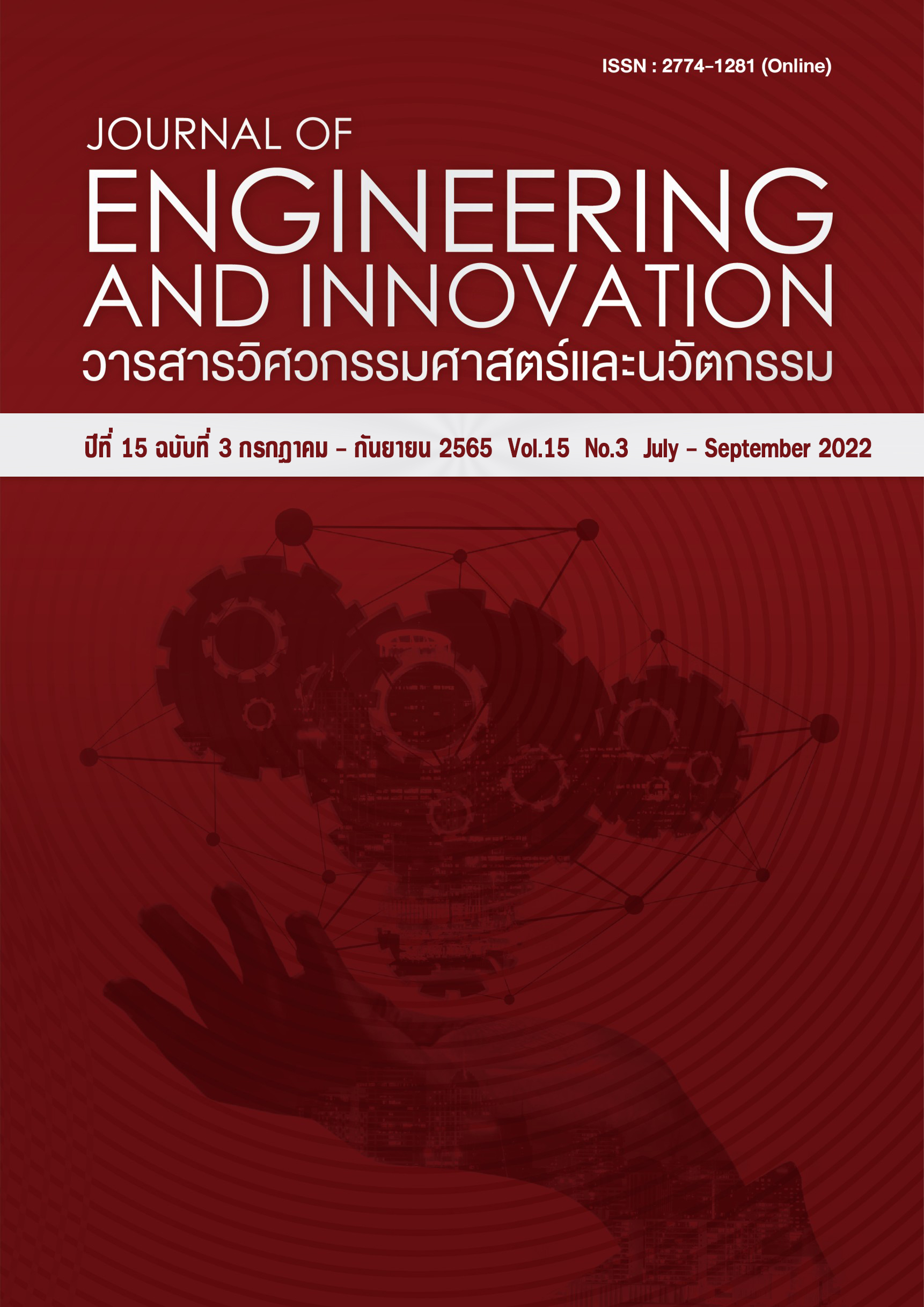Inventory management support system for home decor online business
Main Article Content
Abstract
This research concerns inventory management for home decor online businesses, given that online products are widely varied across categories and the inventory should be managed in a way that enables the ever-changing needs of consumers to be fulfilled in a timely manner. As the selling patterns vary at different periods of time, this research aims to analyze problems and thus develop a new support system for inventory management among home decor online businesses. This new system focused on applying the Inventory policy in controlling and managing orders, putting greater emphasis on the methods of testing Review policy and Ordering policy for each cycle service level (CSL) with an aim to reach 99.90%. The Inventory policy must come with the parameters that take into account different amounts of demand that vary depending on product type, in order to set up for the statistical analysis that is important, particularly in determining the safety stock and despite the limited sales data, considering that only the sales data from 2020 was available. The representative data was tested and the simulation about the demand data was analyzed using the Monte Carlo model in order to find an optimal Inventory Management policy that suits each of the products being marketed online. Following the analysis with the CSL set at 99.90%, the average ending inventory was found high even without lost sales. Further tests were then made into each of the items using their respective CSL and zero lost sales, coupled with the data on actual demand for each of them from January to April 2021. Results show that the fill rates and the cycle service level (CSL) included in the tests can be applied in determining policies for home decor online businesses.
Article Details
References
Richardson & Helen. Control Your Costs Then Cut Them. Transportation and Distribution Review of Economics and Statistics 76. 1995:142-150.
McQueen, R. A. Introduction to Research Methods and Statistics in Psychology. New York: Pearson Prentice Hall; 2006.
Wilcox, Rand R. Basic Statistics: Understanding Conventional Methods and Modern Insights. New York: Oxford University Press; 2009.
ปริญญา สิริอัตตะกุล. One Way ANOVA: Social Science Research. วารสารสหวิทยาการวิจัย ฉบับบัณฑิตศึกษา มหาวิทยาลัยเกษตรศาสตร์ กรุงเทพฯ. 2555;1(1): 13-23.
จิราพร เจตนาภิวัฒน์. การปรับปรุงระบบบริหารสินค้าคงคลังสําหรับสินค้าสําเร็จรูปของบริษัท จัดจําหน่ายสีเคลือบไม้ โดยใช้ระบบรอบเวลาการสั่งคงที่. โครงานพิเศษปริญญาวิทยาศาสตร์มหาบัณฑิต สาขาวิชาการจัดการ ด้านโลจิสติกส์ (สหสาขาวิชา) บัณฑิตววิทยาลัย จุฬาลงกรณ์มหาวิยาลัย กรุงเทพฯ. 2551
กสิณ รังสิกรรพุม. การวิเคราะห์รูปแบบการวางแผนผังตลาดสดด้วยเทคนิคแบบจำลองมอนติคาโล, วารสารวิศวกรรมสาร มก, 32(108): 1-11. 2563.
ดวงพร เมธาอาภรณ์นนท์. การจัดการสินค้าคงคลัง กรณีศึกษากลุ่มผลิตภัณฑ์เครื่องดื่มและ เครื่องปรุงรส. โครงานพิเศษปริญญาวิทยาศาสตร์มหาบัณฑิต สาขาวิชาการจัดการด้านโลจิสติกส์ (สหสาขาวิชา) บัณฑิตววิทยาลัย จุฬาลงกรณ์มหาวิยาลัย กรุงเทพฯ. 2551.
อารยะ ปัญญาเสิรฐ. การกำหนดนโยบายคงคลังของสินค้ากึ่งสำเร็จรูปในกระบวนการผลิตสีน้ำมัน.;วิศวกรรมสารฉบับวิจัยและพัฒนา. 2560;30(4): 159-174.
จตุพล เหมือนศรีชัย. การศึกษาการจัดการวัตถุดิบคงคลังประเภทเหล็กขึ้นรูปชิ้นส่วนรถยนต์ของ โรงงานตัวอย่างในอุตสาหกรรมผลิตชิ้นส่วนรถยนต์ ที่ความต้องการของลูกค้าและช่วงเวลานำมีความไม่แน่นอนด้วยวิธีแบบจำลองมอนติคาร์โล. สารนิพนธ์ปริญญาโท มหาวิทยาลัยมหาวิทยาลัยเทคโนโลยี พระจอมเกล้าพระนครเหนือ กรุงเทพฯ. 2551
Kalton G. Central Limit theorem. In: Introduction to survey sampling. California: SAGE Publications; 1983.
Puchongkawarin, C., & Ransikarbum, K. An integrative decision support system for improving tourism logistics and public transportation in Thailand. Tourism Planning & Development. 2020:1-16.
Ransikarbum, K., Pitakaso, R., & Kim, N. A decision-support model for additive manufacturing scheduling using an integrative analytic hierarchy process and multi-objective optimization. Applied Sciences. 2020;10(15):5159.

